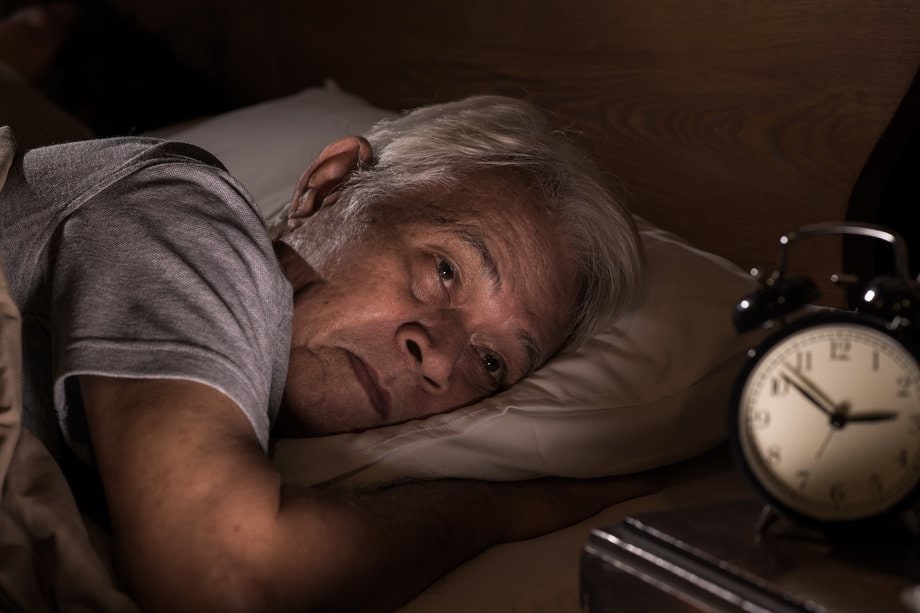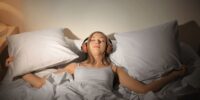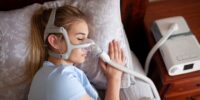How to Recognize the Signs of Sleep Disorders in Seniors

Sleep disorders in seniors are a significant concern due to their negative impact on physical and cognitive health. Recognizing the signs of these disorders is crucial for early intervention and appropriate treatment.
This article aims to provide an objective and impersonal analysis of the various physical, behavioral, emotional, and cognitive indicators of sleep disorders in seniors.
Additionally, it will explore the diagnostic tests available and the treatment options that can effectively address these disorders.
Key Takeaways
- Common sleep disorders in seniors include insomnia, sleep apnea, restless legs syndrome, and periodic limb movement disorder.
- Physical symptoms of sleep disorders in seniors can include chronic fatigue, frequent headaches, muscle pain, and increased heart rate.
- Behavioral signs of sleep disorders in seniors may include increased daytime sleepiness, irritability, mood swings, difficulty concentrating, and decreased motivation.
- Emotional indicators of sleep disorders in seniors can include increased irritability, persistent sadness, anxiety and worry, and decreased motivation.
Common Sleep Disorders in Seniors
Common sleep disorders commonly observed in the elderly population include insomnia, sleep apnea, restless legs syndrome, and periodic limb movement disorder. These sleep disorders have various physical effects and can significantly impact the overall health of older individuals.
Insomnia, characterized by difficulty falling asleep or staying asleep, can lead to daytime fatigue, decreased cognitive function, and increased risk of accidents.
Sleep apnea, a condition in which breathing repeatedly stops and starts during sleep, can result in excessive daytime sleepiness, high blood pressure, and an increased risk of heart disease.
Restless legs syndrome causes uncomfortable sensations in the legs, leading to an irresistible urge to move them, which can disrupt sleep and cause daytime fatigue.
Periodic limb movement disorder involves repetitive and involuntary leg movements during sleep, leading to fragmented sleep and daytime sleepiness.
It is crucial to recognize these common sleep disorders in seniors as their physical effects and impact on overall health can have significant consequences.
Physical Symptoms of Sleep Disorders
Prevalent physical manifestations may indicate the presence of sleep-related conditions among the elderly population. Recognizing these physical symptoms is crucial for early intervention and effective management of sleep disturbances in seniors.
Some common physical symptoms associated with sleep disorders in the elderly include:
- Chronic fatigue: Persistent tiredness and lack of energy can significantly impact daily functioning and quality of life, leading to increased risk of accidents and falls.
- Headaches: Frequent headaches, particularly upon waking, can be a sign of disrupted sleep patterns and inadequate restorative sleep.
- Muscle pain: Sleep disorders can contribute to muscle tension and discomfort, resulting in generalized or localized pain.
- Increased heart rate: Sleep disturbances can cause an elevated heart rate, leading to cardiovascular complications and increased risk of heart disease.
Behavioral Signs of Sleep Disorders
Behavioral manifestations may serve as indicators of sleep-related conditions among older individuals, providing valuable information for healthcare professionals and caregivers to address and manage these issues effectively. Behavioral changes can often be observed in seniors experiencing sleep disturbances, and recognizing these signs is crucial for early intervention and treatment. Common behavioral changes associated with sleep disorders in older adults include increased daytime sleepiness, irritability, mood swings, difficulty concentrating, and decreased motivation. These behavioral manifestations can significantly impact the overall quality of life for older individuals, leading to reduced cognitive function and increased risk of accidents and falls. By monitoring and addressing these behavioral signs, healthcare professionals and caregivers can help identify and manage sleep disorders in older adults, leading to improved sleep quality and overall well-being.
| Behavioral Changes | Sleep Disturbances |
|---|---|
| Increased daytime sleepiness | Insomnia |
| Irritability | Sleep apnea |
| Mood swings | Restless leg syndrome |
| Difficulty concentrating | Periodic limb movement disorder |
| Decreased motivation | Narcolepsy |
Emotional Indicators of Sleep Disorders
Emotional indicators may present themselves as significant markers of sleep-related conditions among older individuals, providing valuable insights for healthcare professionals and caregivers to effectively address and manage these concerns. Understanding and recognizing these emotional indicators can contribute to the overall emotional well-being and mental health of older individuals.
- Increased irritability: Sleep disorders can lead to irritability, making individuals more prone to anger and frustration. This can have a negative impact on their relationships and overall quality of life.
- Persistent sadness: Feeling consistently sad or experiencing an unexplained sense of melancholy may indicate an underlying sleep disorder. Sleep deprivation can disrupt the balance of hormones and neurotransmitters in the brain, leading to feelings of sadness.
- Anxiety and worry: Sleep disorders can heighten feelings of anxiety and worry, making it difficult for older individuals to relax and feel at ease.
- Decreased motivation: Lack of quality sleep can result in decreased motivation and energy levels, making it challenging for older individuals to engage in daily activities and maintain a sense of purpose.
Cognitive Impairments and Sleep Disorders
Cognitive impairments have been found to be associated with sleep disturbances in older individuals, highlighting the need for further investigation into the relationship between these two factors.
Sleep disorders, such as insomnia and sleep apnea, have been shown to contribute to cognitive decline in older adults. Research has found that sleep disturbances can lead to deficits in attention, memory, and executive functions.
These cognitive impairments can have a significant impact on the quality of life for older individuals, affecting their ability to perform daily activities and maintain independence.
Furthermore, the bidirectional relationship between sleep disorders and cognitive decline suggests that interventions targeting sleep quality may have potential benefits in mitigating cognitive decline and improving overall cognitive functioning in older adults.
Further research is needed to better understand the mechanisms underlying this relationship and develop effective interventions for improving sleep and cognitive health in older individuals.
Diagnostic Tests for Sleep Disorders in Seniors
This discussion aims to explore the common diagnostic tests used to identify sleep disorders in seniors. Understanding the various diagnostic tests available can provide valuable insights into the specific sleep disorder a senior may be experiencing.
Additionally, examining the accuracy of test results is crucial in ensuring the reliability of the diagnosis and subsequent treatment plan. It is important to assess the effectiveness of these tests in accurately identifying sleep disorders in seniors, as misdiagnosis can lead to ineffective treatment and unnecessary interventions.
Lastly, recognizing the benefits of early diagnosis can highlight the importance of timely intervention and management of sleep disorders in seniors. Early detection of sleep disorders allows for prompt treatment and improved quality of life for seniors. It can also help prevent the progression of sleep disorders and the development of associated complications.
Common Diagnostic Tests
Polysomnography and actigraphy are two common diagnostic tests used to identify sleep disorders in seniors. These tests play a crucial role in the diagnosis and treatment of sleep disorders. However, it is important to note that the effectiveness of these diagnostic tests can vary depending on the specific sleep disorder being evaluated.
Common sleep disorder treatments include:
- Medications: Pharmacological interventions are often prescribed to manage sleep disorders in seniors. These medications aim to promote sleep and regulate the sleep-wake cycle.
- Cognitive-behavioral therapy (CBT): CBT is a non-pharmacological approach that focuses on changing negative thoughts and behaviors related to sleep. It has been shown to be effective in treating insomnia and other sleep disorders in seniors.
- Continuous positive airway pressure (CPAP): CPAP therapy is commonly used to treat sleep apnea. It involves wearing a mask that delivers pressurized air to keep the airway open during sleep.
- Light therapy: This treatment involves exposure to specific wavelengths of light to regulate the sleep-wake cycle. It can be particularly helpful for seniors with circadian rhythm disorders.
These common sleep disorder treatments, combined with the use of diagnostic tests like polysomnography and actigraphy, can contribute to the effective management of sleep disorders in seniors.
Accuracy of Test Results
The accuracy of test results obtained from polysomnography and actigraphy is an important consideration in the diagnosis and treatment of sleep disorders.
Polysomnography is considered the gold standard for sleep disorder diagnosis as it records multiple physiological parameters during sleep, including brain waves, eye movements, and muscle activity. However, polysomnography requires patients to spend a night in a sleep laboratory, which may not accurately reflect their typical sleep patterns.
Actigraphy, on the other hand, uses a wrist-worn device to monitor sleep-wake patterns over an extended period. While actigraphy is more convenient and less expensive than polysomnography, it may be less accurate in detecting specific sleep disorders.
Therefore, the reliability of test results depends on the specific sleep disorder being diagnosed and the individual’s circumstances. Further research is needed to improve the accuracy and reliability of these diagnostic tests.
Benefits of Early Diagnosis
Early diagnosis of sleep disorders can provide numerous benefits, such as timely intervention and improved management strategies. The importance of early diagnosis cannot be overstated, as it allows for prompt treatment and prevention of potential complications.
Here are four emotional responses that highlight the benefits of early diagnosis:
- Relief: Early diagnosis provides individuals with a sense of relief, knowing that their symptoms have been recognized and can be addressed.
- Empowerment: By identifying sleep disorders early on, individuals can take control of their health and make informed decisions regarding treatment options.
- Improved quality of life: Timely intervention can lead to improved sleep patterns, resulting in enhanced energy levels, mood, and overall well-being.
- Prevention of long-term consequences: Early diagnosis allows for the implementation of management strategies that can prevent or minimize the development of associated health issues, such as cardiovascular diseases or cognitive impairments.
Treatment Options for Sleep Disorders in Seniors
This discussion will focus on the treatment options for sleep disorders in seniors, specifically examining the effectiveness of medication versus lifestyle changes and non-pharmacological interventions.
The debate between medication and lifestyle changes arises from the need to balance symptom management with potential side effects and long-term impacts on overall health.
Non-pharmacological interventions encompass a range of techniques and therapies aimed at improving sleep quality without the use of medication.
Medication Vs. Lifestyle Changes
One possible approach to managing sleep disorders in seniors involves considering the potential benefits and drawbacks of medication versus lifestyle changes.
While medication can provide quick relief for sleep disorders, it is important to carefully weigh the potential side effects. These can include drowsiness, confusion, and an increased risk of falls, especially in older adults.
On the other hand, lifestyle changes offer a more natural and holistic approach to managing sleep disorders. These alternative therapies can include establishing a regular sleep schedule, practicing relaxation techniques, and creating a comfortable sleep environment. Additionally, engaging in regular physical activity and avoiding stimulants such as caffeine and electronics before bedtime can also improve sleep quality.
It is crucial to consult with a healthcare professional to determine the best approach for managing sleep disorders in seniors.
Non-Pharmacological Interventions
Non-pharmacological interventions for sleep disorders in seniors focus on natural remedies and sleep hygiene practices. These approaches aim to improve the quality and quantity of sleep without the use of medications.
Natural remedies commonly recommended include herbal supplements such as valerian root, chamomile, and lavender, which are believed to promote relaxation and sleep.
Additionally, incorporating sleep hygiene practices can help regulate sleep patterns and promote better sleep. These practices include maintaining a regular sleep schedule, creating a comfortable sleep environment, avoiding stimulants such as caffeine and nicotine close to bedtime, and engaging in relaxation techniques before sleep.
While medications can be effective in managing sleep disorders, non-pharmacological interventions offer an alternative approach that may be preferred by some seniors due to concerns about potential side effects or medication interactions.
Frequently Asked Questions
How Does Aging Affect Sleep Patterns in Seniors?
Aging can lead to changes in sleep patterns in seniors. As individuals age, there is a natural decline in the amount and quality of sleep, including decreased REM sleep and increased awakenings during the night.
Can Sleep Disorders in Seniors Be Mistaken for Other Medical Conditions?
Misdiagnosis of sleep disorders in seniors can occur due to similar symptoms with other medical conditions. This highlights the importance of accurately recognizing and differentiating sleep disorders from other potential health issues in older adults.
What Are Some Lifestyle Factors That Can Contribute to Sleep Disorders in Older Adults?
Various lifestyle factors can contribute to sleep disorders in older adults. Poor sleep hygiene, such as irregular sleep schedules and excessive daytime napping, can disrupt the sleep-wake cycle. Additionally, medication use, particularly certain types of medications, may interfere with sleep patterns.
Are There Any Natural Remedies or Alternative Therapies That Can Help Improve Sleep in Seniors?
There is limited scientific evidence on the effectiveness of natural remedies or alternative therapies for improving sleep in seniors. Further research is needed to determine their efficacy and safety in this population.
What Are the Long-Term Consequences of Untreated Sleep Disorders in Older Adults?
Untreated sleep disorders in older adults can have long-term health consequences, including an increased risk of cardiovascular disease, obesity, diabetes, and cognitive decline. These consequences highlight the importance of early recognition and intervention.








